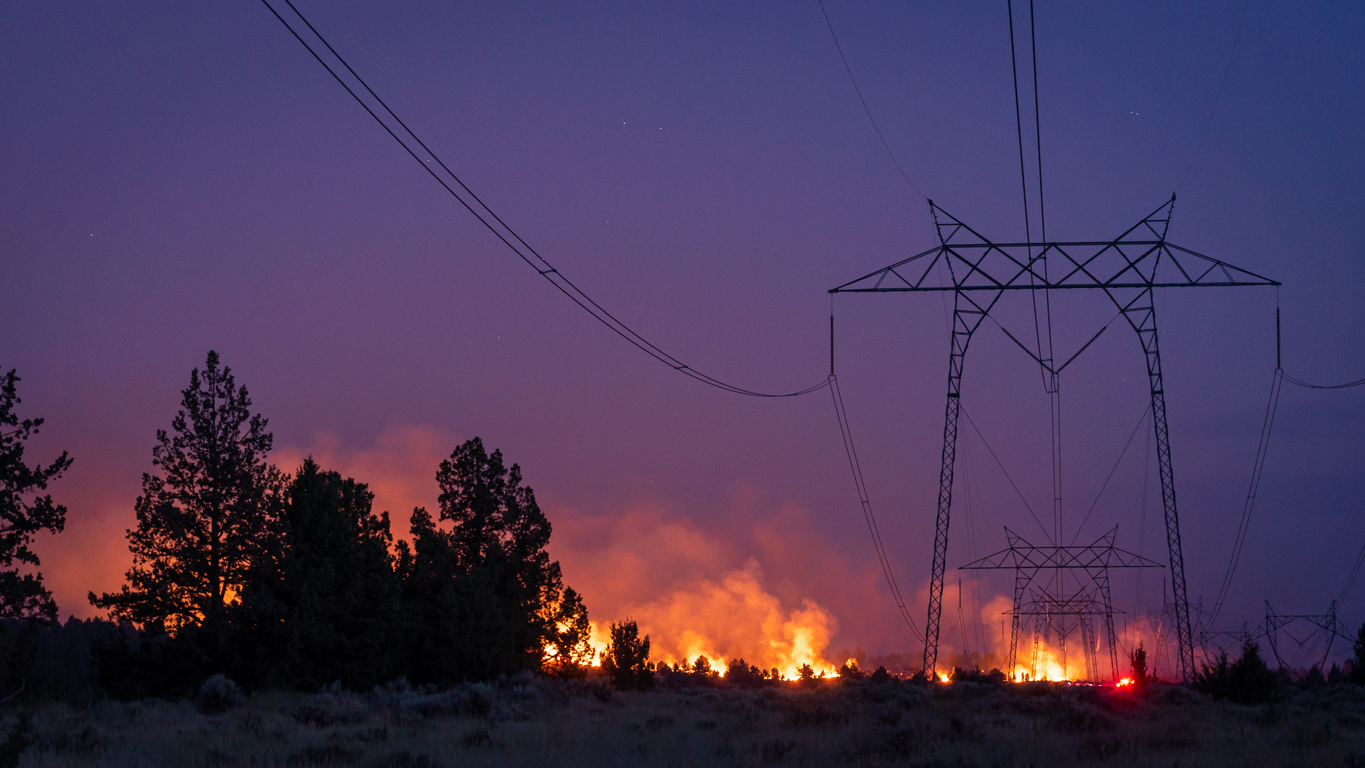Maui County filed a lawsuit Thursday against utility company Hawaiian Electric, alleging that its power lines caused recent wildfires on the island—including one that destroyed the town of Lahaina and killed at least 115 people.
The suit was filed in state Second Circuit Court in Hawaii against Hawaiian Electric and its subsidiaries on Maui, alleging the company failed to maintain the electrical system and power grid during a windstorm that lashed the island, resulting in three different fires that erupted on Aug. 8.
The fires in Lahaina and another community, Kula, burned over 3,000 acres, destroyed more than 2,200 structures and caused an estimated $5.5 billion in damage in the nation’s deadliest wildfire in more than a century. Some 1,000 people are still unaccounted for.
The lawsuit claims that the utility, known as HECO, acted negligently by not pre-emptively cutting power despite a warning the prior day from the National Weather Service of high winds and temperatures, along with low humidity—prime conditions for a wildfire. It also says HECO’s failure to maintain its system led to energized, downed power lines causing the fires.
Maui is seeking unspecified civil damages to cover losses to public infrastructure, fire response and other costs, decreased tax revenue, environmental damage and losses of historical and cultural landmarks.
“Maui County stands alongside the people and communities of Lahaina and Kula to recover public resource damages and rebuild after these devastating utility-caused fires,” the county said in a press release.
A HECO representative said in a statement, “Our primary focus in the wake of this unimaginable tragedy has been to do everything we can to support not just the people of Maui, but also Maui County. We are very disappointed that Maui County chose this litigious path while the investigation is still unfolding.”
The Wall Street Journal reported last week that HECO was in talks with firms that specialize in restructuring advisory work, after investors sold off its stock and bonds and Maui residents began filing lawsuits alleging it was negligent before and during the fires.
The utility’s power lines have been a suspected cause of the fires since videos surfaced of grass and brush being ignited near Lahaina and Kula and numerous home electronic sensors detected faults around the island. The fires were fanned by high winds as Hurricane Dora passed hundreds of miles to the south.
Several people reported utility equipment igniting fires. In the hills above Lahaina, Dominga Advincula said she was leaving for work between 6 a.m. and 6:30 a.m. on Aug. 8 when she heard a power transformer blow in a field nearby. “It sparkled like fireworks and landed in tall grass,” said Advincula, 56. “That started the fire.”
Proactively shutting off power lines to reduce wildfire risk is common practice among utilities in California, but that strategy has to date been rarely used elsewhere. Utilities across the West are working to establish formal plans for doing so when dangerous winds pick up.
PG&E, the utility company serving most of Northern California, has relied heavily on shutoffs after its equipment ignited more than a dozen destructive wildfires, including the 2018 Camp Fire that killed 84 people and destroyed the town of Paradise.
But shutoffs pose challenges. A range of critical infrastructure requires electricity, as do customers who need it for medical reasons. Utilities planning to take such measures are working to determine how best to alert customers of the need for outages and minimize their impact by installing technologies that allow them to pinpoint risky areas.













